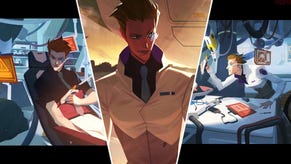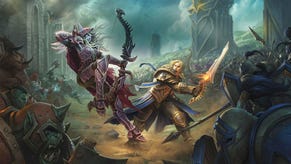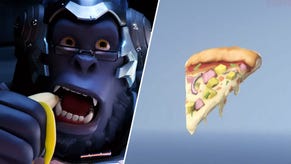Overwatch guide: how to win at Escort, Assault and Control modes
The tactics, teamwork and heroes required to come out on top in Overwatch's three different modes.
Overwatch guide: how to win at Escort, Assault and Control modes
Overwatch may only have three different modes (at the moment) but make no mistake: all three require different thinking if you plan to win the match. Your choice of heroes and the tactics you and your team employ will vary depending on whether you're battling in Escort, Assault or Control mode.
Here we have a run-down of each mode, how to play to strengths, strategies to deploy and observations on trends that are starting to show in the early days of the game.
Overwatch: How to win at Escort
Clutching victory from the jaws of defeat is always a possibility in this slow moving though always thrilling, highly strategic game mode. Here’s the skinny from both sides.
The premise of Escort is a variant of Payload from Team Fortress 2, but as with all aspects of Overwatch, the strategy is not so cut and dried. Like Payload, Escort requires one team to deliver a slow moving vehicle to its destination, passing through several checkpoints along the way. Meanwhile, the defending team tries all it can to halt progress. The attacking team is up against a time limit for each checkpoint, and failure to cross the line results in match failure. Really, the pressure is all on the attackers to keep calm and organised because defenders only need to prevent the vehicle from reaching the goal… often with mere inches to spare.
Escort basics
In the interest of presenting an entertaining fight, Escort urges attackers to stay close to the vehicle in order for it to move. The vehicle’s speed increases up to three times depending on the number of heroes nearby, so the gamble is about spending half the team on the haulage while supporting heroes distract and hopefully disable defenders’ attempts to halt progress.
A key consideration for both teams is that checkpoints trigger new respawn locations for either side, inching attackers forward and defenders further back. This mainly serves to balance out the time it takes to rush back to the battle after being killed. Interestingly, it also means that by the end of the round the defenders have slightly less distance to travel when returning to their last position, improving their chances of a clutch victory.
If everyone abandons the vehicle location to focus on kills, this causes it to move slowly back to its starting position. Again, the weight of responsibility is on the attackers. Perhaps the only respite for attackers is that a contested vehicle – shadowed by at least one member of both teams – can extend the clock into Overtime after it reaches zero. Attackers should never give in, nor should defenders ever give up.
Defending
Your team should initially comprise heroes that force the attackers out of position for as long as possible. Make the vehicle a treacherous location to be found, using the time you have in advance of the game starting to take sniping positions and prepare traps such as Symmetra’s turrets. By keeping the attackers pinned at their own base, this buys valuable seconds for later on – assuming that they eventually wriggle free and get things moving.
In the likely event that the attackers get a foothold and work well to eat away at your lone-wolf heroes that are spread out across the first area, the certainty that at least one attacker is accompanying the vehicle provides focus for the team. Offense class heroes with healing and/or shield/enemy de-buff support can use nearby vantage points to flank the vehicle. Again, slowing if not completely stopping the vehicle is priority. Constant bombardment should force remaining attackers to rally against rival players and lose sight of time.
The above tactic is relevant until the vehicle passes the final checkpoint before reaching the home straight. When defenders are in this position, it’s time to focus efforts on weakening and killing the attackers, launching assaults from behind with confusing characters such as Reaper and Tracer, turning the back of (most likely) Reinhardt for turrets to wear down. The temptation is to double down on defence classes to dig in as though forming a road block. What you really must be doing instead is scattering the attacking team to keep them away from the vehicle. It makes it easier for them if the enemy is all lined up directly ahead.
Attacking
Knowing that you’re all stepping into the carefully laid ‘minefield’ of the defenders, a unified effort is required from the attacking team out of the gate. The attacking team’s first order of business is to dismantle those defending strategies; to locate the Widowmakers, lure out the likes of Zenyatta and his debilitating Orbs, and keep tabs on any Reapers and Tracers. Stay organised, have everyone form up behind Reinhardt and D.Va to keep the threat in front where you can see it. As soon as everyone gets scattered the attack effort is hurt.
The ace in the pocket of the attackers is that only one hero needs to get close enough to the vehicle to keep it inching forward. Mainly, you just need to ensure that teammates have got their six. This whole tug of war can be summarised as defenders disrupting attackers’ best efforts to move forward, slow and steady as a unit. To this end, mid- to long-range weapons scoping out threats from behind Reinhardt’s shield with teleporting Reapers closing distance fast on turrets and snipers is a sound approach. Main thing is to always regroup.
As mentioned above, the defenders try everything they can during the final push to lure attackers from the vehicle. Ultimate abilities such as Lúcio’s Sound Barrier and Zenyatta’s Transcendence are saved, allowing agile offense guys McCree and Soldier: 76 to clean up. Your key hero throughout the match is usually Reinhardt, most likely with Torbjörn riding alongside to defend while Mercy or Zenyatta keeps him in good shape. Just keep your s**t together and the journey from A to B can be surprisingly swift.
Notes
It’s very early days for Overwatch, but already players are attempting to force the balance of this game mode with teams built on multiple Torbjörns and/or terrorising with Mei. Higher skilled players are causing problems with Hanzo and Widowmaker, greatly swaying things in favour of either attack or defence. When sure-fire strategies emerge along these lines we’ll revisit the Escort tactics here on VG247, but for now, the basics outlined here are sound.
Next page - Assault mode
Overwatch: How to win at Assault
Team build may not be crucial, but approach this as a simple free-for-all and you’ll have a horrible five minutes to wait out. Overwatch always rewards buddies that hang together.
In Assault, one team rushes in to steal two points on the map from the opposition. It can appear as a frenetic, unstructured business but it’s clear that winning teams are always those that can coordinate, even if just two players go in with a clue (e.g. Mercy and Bastion) and play the objective. Although not a MOBA, in which player death carries time penalties for the team, Assault in Overwatch does mirror some of the strategy involved regarding down time. A team of six is crippled if the lone support hero is absent for only half a minute or your main DPS guy is caught jogging all the way back from the respawn.
Assault Basics
So, the main thing to consider in Assault is to move as a team as much as possible. Don’t have guys trickling in, trying to fight through four or more adrenaline pumped adversaries. The game just doesn’t cater for that. Your team really will not thank you for trying.
Among the three game modes available right now, Assault is the one that’ll most likely see you bringing more than one hero to the party. It’s like some ridiculous game of chess, in which the pieces are constantly changing to even out the rock-paper-scissors pros and cons.
For that reason, a balanced team is best for most players, meaning at least one support, one tank, a couple of offense and a couple of defence. Who these are will likely change as the situation moves from getting that foothold to forcing out the defending team completely. For example, Mercy is great support for the initial push, then Symmetra can substitute for territorial lock down. Or don’t die at all the whole game, which is even better of course.
Situations can turn bad horribly quick in Assault, and it’s usually because only a couple of heroes went down, leaving the remaining guys vulnerable, and then trying to Rambo the control point to the horror of fellow respawning victims. Basically, always regroup.
Capturing
The defending team is expecting your arrival, so the initial approach is very important. It’s similar to the stand-off at the beginning of Escort in some ways – the first side to get broken up is the one placed on the back foot. Look for the common tactics of Bastion bullet hoses and Widowmaker lines of sight that are eagerly awaiting your first attempt to claim the control point. Move cautiously and call out these positions to your team, if you can (if you’re not playing with randoms that is, in which case... good luck).
By eliminating the enemy team’s key holding positions, you’re likely to face teleporting Reapers, slippery Tracers and the freeze blasts of Mei before the coast is well and truly clear. To capture that point, it’ll take some solid cleaning up work from an offense hero such as Soldier: 76 or an adept Reaper of your own to create distraction while shield boosted and/or health replenished heroes begin to turn the dial in your favour.
It’s really the attacking team that has the most work to do in terms of adjusting to how the defenders have themselves organised. Widowmakers can one-shot a whole procession of sleepy heads on the Hanamura map, while Torbjörn turrets require the flanking approach.
The safest go-to guy is usually Reinhardt, though only where you may not need to watch the rear. But in a more open scenario, send in performance buffed heroes such as Tracer and Reaper to create havoc, dashing out from the cover of D.Va or Roadhog to soak up damage.
Defending
Defending in Assault is fun, and funny when it’s all going well; horrifying when it’s not. Again, using Hanamura as an example, the first capture point can either work perfectly as a kill zone, or fall to pieces if the enemy is allowed to flank at speed.
Symmetra is the true god-send to any defending team in Assault. Her teleporter rushes fallen comrades back to the front line asap. Her sentry turrets are lethal if well-hidden and strategically placed at choke points. Even if the enemy knows to stop and shoot them out of action, this is vital seconds for them, during which they’re not descending on your control point, and anyway leaving themselves open to attack. Keep your Symmetra safe.
It has to be said that knowing the maps and rival hero capabilities does influence where you can confidently place Bastion and Widowmaker, but Deathcam and Play of the Game tell you just how well this can work out if you get it right. While they’re keeping the attackers occupied, inching around corners, you can employ Reaper, Tracer and Soldier: 76 to hunt down stragglers. It’s a bonus if you’ve got skilled Hanzo players that can headshot and Dragonstrike to nail attackers to the floor, which is very frustrating on the receiving end.
To sum up, defending your position successfully requires situational awareness from the whole team, but a lot of the stress can be avoided with Symmetra as the backbone and carefully chosen patrol areas for Hanzo, Widowmaker and Bastion. It’s Tracer, Reaper and Genji that get to scrap it out in the middle, though D.Va and Roadhog have their moments.
Notes
Assault is the most rigid of the game modes in Overwatch right now, but is compelling because it clearly highlights the pros/cons of character match ups. Neither side has the advantage at any point; defenders with it all to lose while attackers have everything to gain. Currently we’re seeing that the best Reaper, Genji, Soldier: 76 and McCree players are causing the biggest upsets while Bastion, once thought overpowered, is very predictable. Anyway, if anything needs tweaking (nerfing!?) this’ll become apparent in Assault first.
Next page: Control mode
Overwatch: How to win at Control
Control is the closest thing Overwatch has to a purely competitive arena at launch. It’s a hairbrained brawl that sometimes remembers that it’s an objective mode too.
For some of us, being asked to Play the Objective is like being told to form an orderly queue at a gig venue. It sounds miserable. Control is the objective mode for people that think they don’t like objective game modes at all. It still very much is an objective game mode, though you’ll likely see it as a fight for the front row. Point is, give any team good reason to work together and eventually they kind of will. Some great games have emerged from Control.
Because both sides begin with nothing in hand, the stand-off that occurs in the opening minutes of Control can appear like a standard Deathmatch arena. There’s a lot of duelling between offense heroes, while support heroes work to turn the tide. Some teams prefer to go in as a spearhead and cleanly take the objective, while others enjoy a more freeform, individual expression kind of fun. There’s no time limit here, it’s all about possession. But, whether by accident or cunning plan, one team will be the first to start capturing a point…
Control basics
Both teams are attackers and defenders. There is no pre-match preparation here, just fight fire with fire. It’s easiest to say that Control is about watching your buddy’s back at all times, and hoping that somebody has got yours just in case. It’s almost like Street Fighter in that the first to take two rounds wins, the K.O. being when one side claims a capture point. You really don’t want the other team to achieve this, so it gets quite personal and scrappy.
Again, no time limit. What matters here is holding objective points long enough for the roundels to complete and then for the percentage points to reach the max 100. Keep the enemy out to avoid the zones being contested, which extends the drama until one side has the advantage once more. A team can have the point at 99% and still have the tide turned. It’s a white-knuckle ride, and you’re praying that your teammates have basic competence.
Defending while attacking…
The yin-yang nature of Control means you’re never doing one job as a team. When taking a control point, preserving your entire crew can be as important as choosing the best counter heroes to the opposing team. Folk tend to die a lot in Control, mainly because you’ll see so much dancing around an objective point before somebody finally starts the meter rising.
Usually the side that suffers casualties first is the one that loses the foothold, so be smart with your support heroes to make the enemies weaker while your team becomes better armoured and heals fast. Our old pal Reinhardt remains a popular choice to lead the charge. However, causing confusion with somebody like Junkrat or even Symmetra (sentry turrets) and Widowmaker (poison traps) is a great tactic to allow surgical strikes from Reaper and Soldier: 76. Meanwhile, Mei is a colossal pain in the backside if allowed to enter the control point and freeze everyone that thought they had this all locked down. Thing is, this is not over until that last percentage point pings.
Attacking while defending…
Assuming that your team is currently in charge and that percentage meter is gaining speed, the last thing you want to do is sit back and allow the opposition to come to you. With, e.g. Reinhardt, Bastion and Torbjörn holding fort and maybe Mercy keeping them active, around three of your roster should be out hunting – at the very least causing enough trouble to be a major distraction. Having possession of the control point is like leading 1-0 in football with 10 minutes to go, the other team needs to commit more than you do, and they can only be heading in your direction. And so, with their backs turned and focusing on eliminating the threat currently basking in the hotspot, this is the best time to wade in with tanks Roadhog and D.Va, and cause much gnashing of teeth with a fleet-footed Tracer and Soldier: 76.
Attack as the best form of defence is so true when your team has the upper hand in Control. If you’re especially organised about it, you can even lure close-range attackers into the zone – e.g. Genji, D.Va and Reaper – and hurl every ultimate you’ve had cooking at them at once. Psychologically this is devastating, speaking from experience. One side thinks it’s chaos, but the winning side is the one that sees the bigger picture at all times and knows when to play the advantage. Overwatch is a fast paced game, much closer to Titanfall than Team Fortress. It’s a constant barrage during which win and lose are perfectly interchangeable. Defending teams in Control need to have the opposition play into their hands.
Notes
21 heroes doesn’t seem like many at all, the rate at which you’ll experiment in Control. Switching out heroes is a viable tactic, but needs to be communicated if possible so that everyone doesn’t get miffed and resort to Bastion or Soldier: 76 en masse only to get whacked by cool-headed Widowmakers and heads spun by Reapers. Respond to what the other guys are succeeding with by all means, but do so strategically and take longer than a couple of seconds to stab at the selection button. That said, we do also love that Control allows for random encounters in which your personal rampage can greatly assist the team.
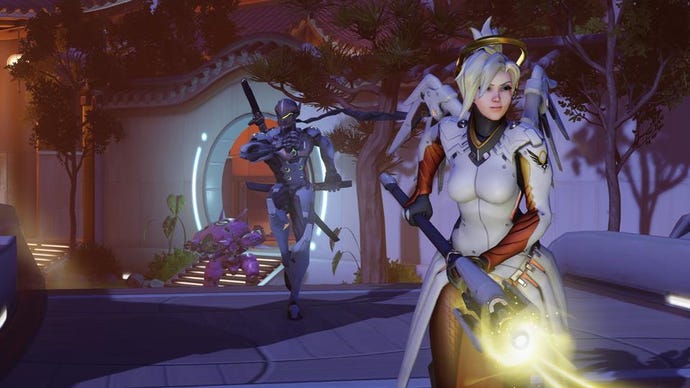
















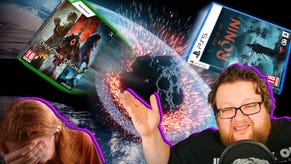
.jpg?width=291&height=164&fit=crop&quality=80&format=jpg&auto=webp)
